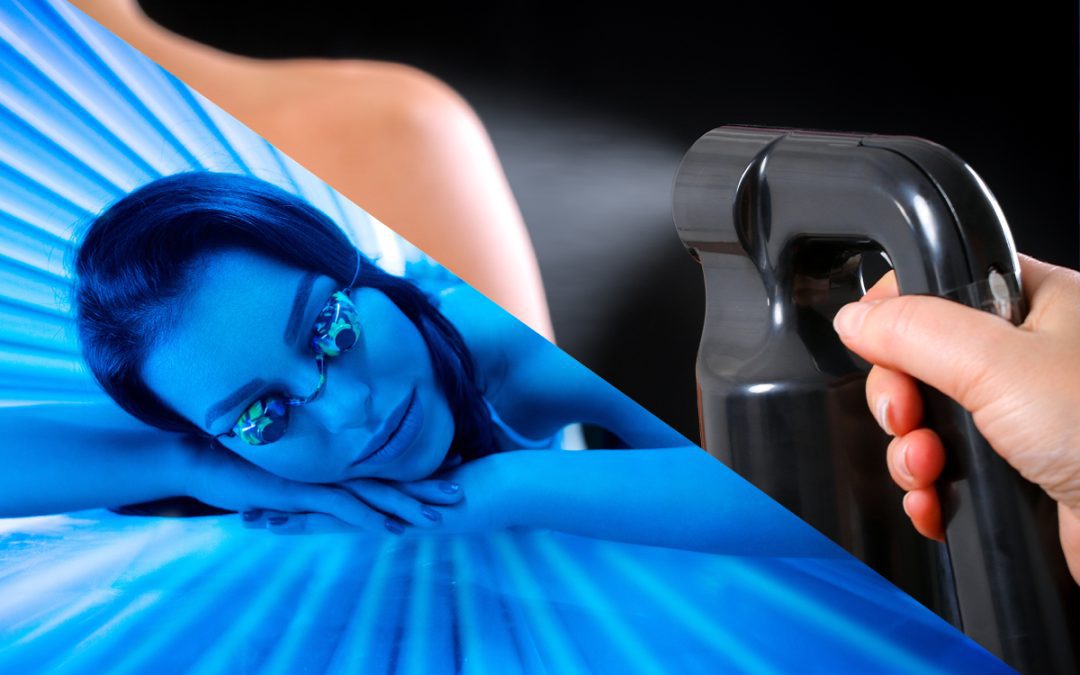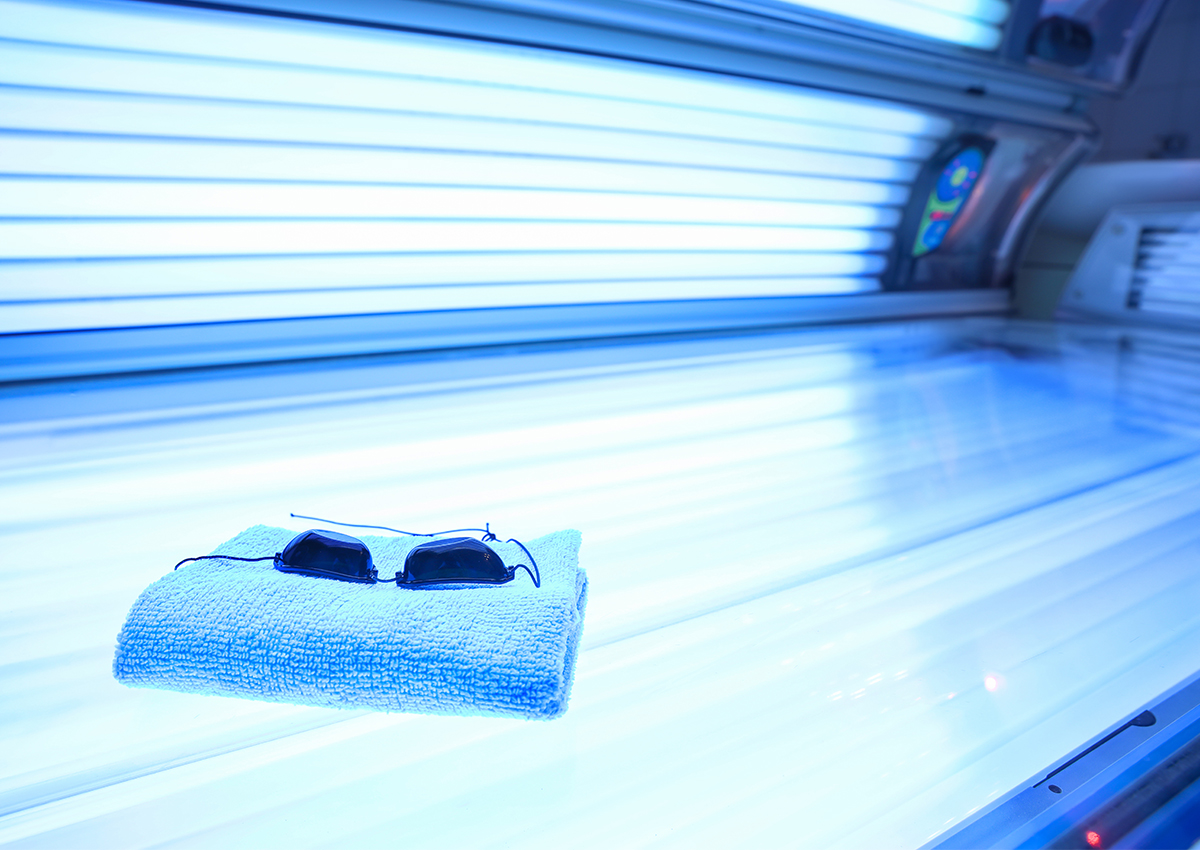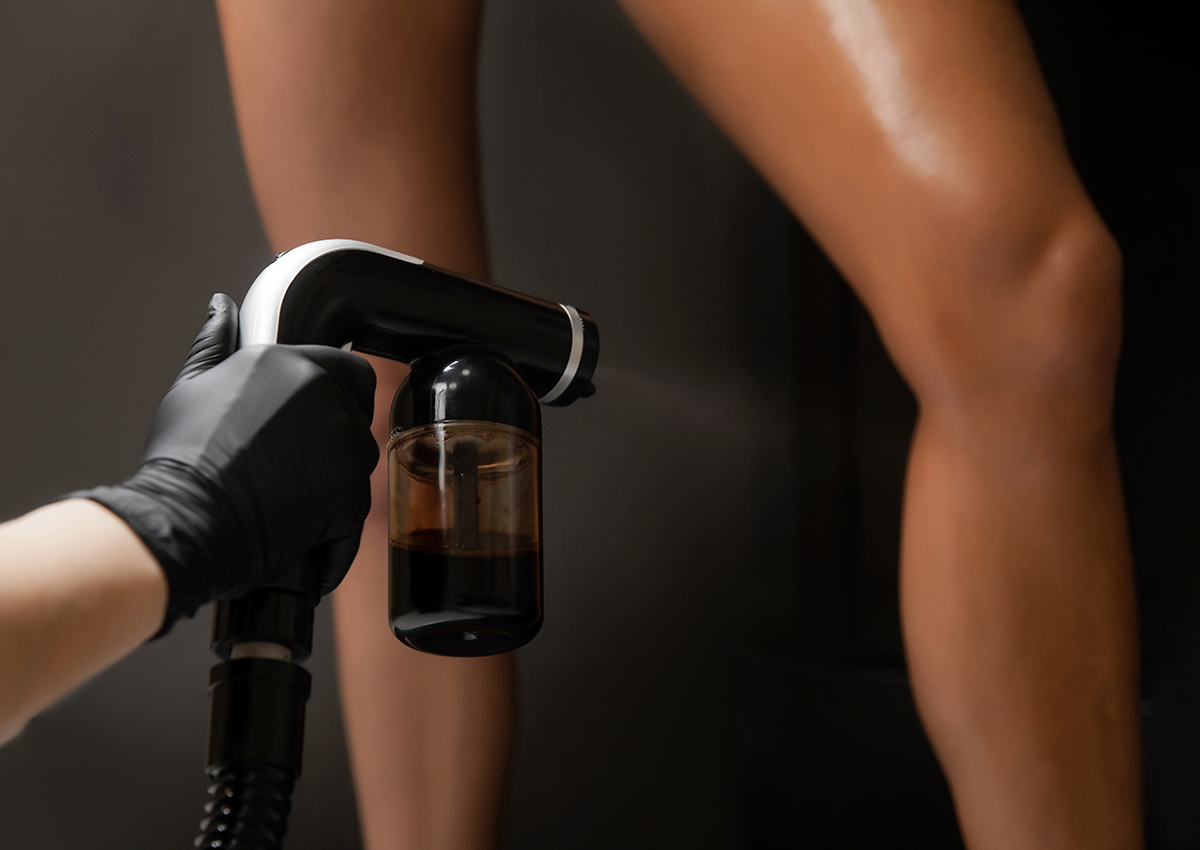Just like the tanning bed market, the UK spray tan industry is making a strong comeback post-pandemic, with a renewed focus on the combined cosmetic and health benefits. This shift towards indoor tanning is inspiring people to explore new methods of self-tanning to achieve their desired look. This begs the question: which self-tanning method is best, spray tanning vs. tanning bed sessions?
The answer isn’t clear-cut. In fact, it will completely depend on how each method’s pros and cons align with your needs and priorities. To get to the bottom of this let’s delve deeper into the differences between getting a spray tan vs. using a tanning bed, and what this means for the consumer.
A background on each method
Before we get into the advantages and drawbacks of each self-tanning method, let’s take a walk down memory lane and unearth a little about their histories.
Tanning beds
When you bring up the popularity of sunbeds, many people are surprised that they’re still so widespread. In reality, they garner millions of views across social media, which translates into millions of Brits participating in indoor tanning in salons up and down the country, and indeed, using them from the comfort of their homes.
In the grand scheme of things, sunbeds are relatively new in the realm of regular beauty practice. First developed in the 60s and 70s following the legacy of “phototherapy”, and then gaining popularity in the 1980s, they have quickly established themselves as a quick and cost-effective way of bronzing.
Nowadays, advanced tanning technology, including cool tanning tubes and energy-efficient ballasts, means that there are more types of models available, it’s a more comfortable experience and the risks are reduced.
Spray tanning
Likewise, spray tanning has come a long way since its inception. In the millennia preceding the Industrial Revolution, paleness was a symbol of aristocracy and refinement, hinting at a life of leisure spent indoors, shielded from the sun’s rays.
However, after Coco Chanel’s inadvertent sunburn in part popularised the tan, the bronze look became trendy, with women even using household staples such as Bovril and gravy to create a faux tan in times of economic turmoil. By the 1960s these DIY recipes were replaced by the first sunless tan product, and the rest is history.
Comparing methods: Spray tans vs. tanning beds
There are many benefits to using sunbeds and booking in a spray tanning session alike. From the convenience and ease of the process to the flexibility and gorgeous results, there are many elements to compare and contrast.
| Tanning method | Spray tanning | Sunbeds |
| Process | Application of a tanning solution to the skin via an automated booth or technician at a salon. | Lying down or standing in a sunbed, either at home via rental or at a salon. |
| Duration of results | 5-7 days | 2 weeks + |
| Convenience | Instant bronzed look, but at the cost of reduced time-efficiency and a mess to clean up. | Home hire options are available, eliminating the need to travel. It takes time to build up a tan, but each session is a matter of minutes. |
| Customisation | Choose your shade of tan, but once the process starts you can’t make adjustments. | Adjustable session durations and a range of available intensities and sunbed models. |
| Appearance | Strong results, but the potential for less natural results. | More natural results, similar to outdoor tanning. |
| Health implications | Spray tan solutions often have a moisturising effect and pose no risk via UV exposure. | Provides vitamin D, improving bone health and supporting your immune system. Duration and UV intensity must be monitored. |
| Pricing | £25-35 for a good quality full-body spray, which amounts to £75-£105 per month if you top up 3 three times. | £80 to £200 per month to hire from home or £15 to £50 for an in-person session. |
| Downsides | Potential staining, exposure to chemicals that can cause skin damage and sensitivity. | The potential for UV overexposure. |
Below we explore each of these elements in greater detail.
How the process works
Spray tanning involves the application of a tanning solution to the skin through an automated booth, by a technician using a handheld device or at home. The solution contains DHA, a colourless sugar that reacts with amino acids in the skin to produce a tan effect. The process is quick, taking only a few minutes, and the results are immediate.
In contrast, tanning beds use UV radiation to stimulate melanin production in the skin, resulting in that coveted sun-kissed look. Users typically lie in a tanning bed for a predetermined amount of time, usually ranging from a few minutes to around 20 minutes per session. Multiple sessions are often required to achieve the desired level of tan over a gradual period.
Duration of results
Spray tans typically last for about 5 to 7 days, depending on factors such as skin type, preparation, and aftercare. However, with proper maintenance, including moisturising and avoiding excessive exfoliation, the tan can be extended for up to 10 days or more.
Tanning bed results can last longer, usually up to 2 weeks or more, depending on the frequency of sessions and individual skin characteristics.
Convenience
Hiring a sunbed at home offers unparalleled convenience for those seeking a quick and efficient method to achieve a sun-kissed glow over time. Whether opting for sessions at a salon or enjoying the luxury of a sunbed at home, the sunbed process is straightforward and time-efficient.
In contrast, while spray tanning provides a great alternative, you can’t as easily do it at home – not without making a mess! This can be time-consuming and may not suit individuals with busy schedules who prefer a more efficient tanning method.
On the upside, however, there’s no waiting for results to develop over multiple sessions; users can achieve their desired tan in a single session and enjoy the immediate gratification of a bronzed complexion.
Customisation
Sunbeds offer a level of customisation that is unmatched by other tanning methods. With adjustable session durations and a range of available intensities, users have full control over their tanning experience, allowing them to tailor their tan to suit their preferences and skin type.
While spray tanning also offers some level of customisation as you can pick your exact shade, the results may not always align with users’ expectations. Achieving the perfect look with spray tanning can be challenging, as factors such as solution concentration and application technique can vary, leading to uneven or smudgy results if misapplied.
Appearance
One of the key advantages of tanning beds is the natural appearance they impart to the skin. Unlike spray tans, which can sometimes result in uneven or streaky tans, sunbeds offer a flawless and uniform finish not dissimilar to the natural results of the sun.
While tanning beds can provide a similar bronzed appearance, achieving consistency may require careful positioning and monitoring during each session. Factors such as skin type and sensitivity can also affect the outcome, potentially resulting in variations in colour or texture.
Health implications
When considering the health implications of spray tanning vs. tanning beds, it’s essential to think about skin safety and well-being. Spray tanning offers a safer alternative to UV exposure, relying on a DHA-based solution to achieve a tan effect; however, the formula can pose skin sensitivity and possible harm.
Contrary to popular belief, sunbeds can provide several health benefits beyond achieving a tan. Controlled exposure to UV radiation stimulates the production of vitamin D in the skin, which plays a crucial role in bone health and immune function. Additionally, regular sunbed use has been associated with improvements in mood and overall well-being, thanks to the release of endorphins during tanning sessions.
Pricing
The cost of a spray tanning session will vary from salon to salon but will generally fall within the range of £25-35 for a good quality full-body spray. Given the speed by which your tan fades, this can add up for the regular salon goer.
Similarly, the cost of sunbeds varies depending on the specific service and the provider. For instance, a single session in a salon may cost from £15 to £50 depending on the duration and location.
Hiring a sunbed from home, however, proves to be a more economical option – while the costs range from £80 to £200 per month, you can use them whenever you please – ideal for the regular tanner.
Are there any drawbacks?
We’ve covered the upsides of spray tanning vs tanning bed hire, but are there any drawbacks? As with any health and beauty regimen, there are some considerations you should take heed of before taking the leap.
When spray tanning, you may experience staining, although the colour should wash out of sheets and clothing. Alongside this, be careful to take the proper pre- and post-tan care to prolong your results and ensure that you conduct a patch test with the spray tan solution on a small section of your skin before doing your whole body.
As for tanning beds, while the UV light they emit has been shown to help treat certain skin conditions in conjunction with medical treatment, users must be careful to avoid overexposure to these UV rays. As you would the sun, ensure that you’re using the correct protective methods, including goggles and sun cream to protect your skin.
Using spray tan versus a tanning bed: which is better?
So, are spray tans better than tanning beds or vice versa? Ultimately, the decision to choose spray tanning or tanning beds depends on individual preferences, priorities, and lifestyle factors.
While both methods offer benefits for achieving a bronzed glow, spray tanning stands out as a great option for a one-off event or short holiday. Sunbeds, however, are more economical and convenient for those who regularly top up their tan, thus an ideal method for maintaining a consistent sun-kissed look.
Parting words
There we have it, a complete rundown of the pros and cons of spray tanning vs tanning bed sessions. Armed with this information, you can make an informed and rational decision about which option best suits your preferences and requirements.
Whether you opt for the convenience of spray tanning or the lasting allure of tanning beds, remember to prioritise skin health and moderation above all else. After all, a healthy glow is always in style.



